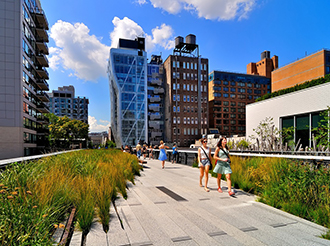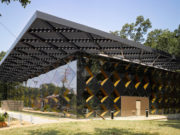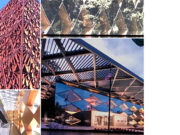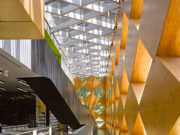I joined the American Institute of Architects (AIA) as an International Associate member, since I’m an architect from Chile. I was very fortunate to attend the AIA Conference on Architecture 2018 over the summer in New York City. It was an enriching professional experience.
The NYC location was just the perfect place to appreciate the top architecture in the world while I walked around the city. The conference theme “Blueprint for Better Cities” interested me, and AIA described the theme: “Better by Design: It’s time to think more about health and resilience, about taking care of each other and the environment, and about solving for ‘X’, all through the lens of what we build — and what we don’t.”
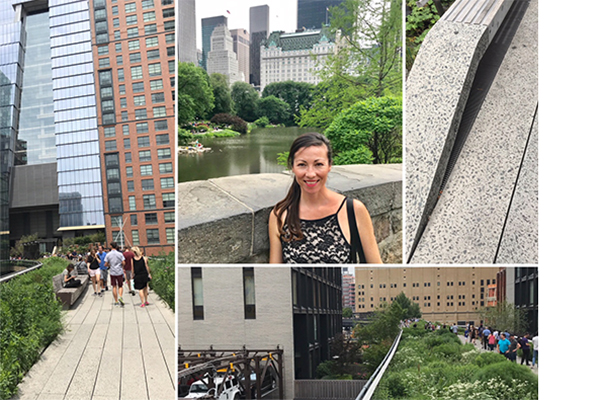
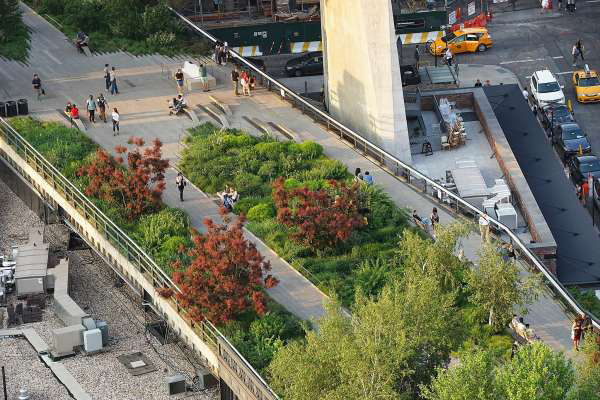
(Photos: The High Line, an elevated public park built on a historic freight rail across buildings on Manhattan’s West Side. Design has been incorporated in urban furniture and vegetation.)
I have been fascinated with sustainability since I was in college and having the opportunity to hear about it from world-renowned architects was astonishing! I attended lectures on topics like diversity, equity and inclusion and how they are relevant to affordable housing, green spaces, health and safety. Energy and carbon also were top topics; The design of buildings can help decrease carbon pollution, save energy, and of course, improve quality of life.
(Photos from Sir David Adjaye’s presentation. Building: Francis A. Gregory Library, Washington D.C. Design strategy: Highly sustainable building taking advantage of vegetation, maximizing winter sun exposure, and controlling summer sun with a large canopy)
Being part of the Travois team gives me an opportunity to learn more about Native American communities. At the first day’s keynote event at the gorgeous Radio City Hall building, I felt especially touched by Architect Tamara Eagle Bull’s speech. She was awarded the AIA’s 2018 Whitney M. Young Jr. prize, which distinguishes an architect who embodies social responsibility and actively addresses a relevant issue.
Tamara is the first Native American woman in the U.S. to become a licensed architect. She is member of Oglala Lakota Nation and firm advocate for preservation and respectful representation for Native American culture in tribal built environments. She is the co-founder and president of Encompass Architects and the executive board secretary at the American Indian Council of Architects and Engineers.
Her keynote speech was so powerful and emphatic. She said there is still much to do in terms of achieving a truly diverse profession. She told the story of how her father dreamed about being an architect. He was always building something for their tribe, but he could not accomplish his dream because he was discouraged by a non-Native school counselor.
She said her father inspired and encouraged her ever since she was a child, so she decided to become an architect to help Native American communities. She said that architects need to listen to what communities have to say and not impose their own ideas, and she explained that she designs “environmentally responsible architecture” because it considers solar orientation, conservation and energy efficiency. She concluded saying “diversity is good; diversity is necessary.” I felt moved, and I identified with her speech. I think this is why I am so happy doing what I do every day.

When I came back to Kansas City, while doing some research, I found out that Tamara Eagle Bull participated on a collaborative Indigenous design project, “Unceded: Voices of the Land,” for the 2018 Venice Architecture Biennale exhibition. It exhibited architectural work by indigenous architects and designers, including Chris T. Cornelius, who participated in Travois First Fridays! Small world! Check out the project here. It is beautiful!
This conference and these presentations encouraged me and inspire me to contribute with sustainable design. My insight is that architects can make a difference in our communities. I truly believe it, and I continue to try to apply these concepts while designing developments for Travois Design clients.
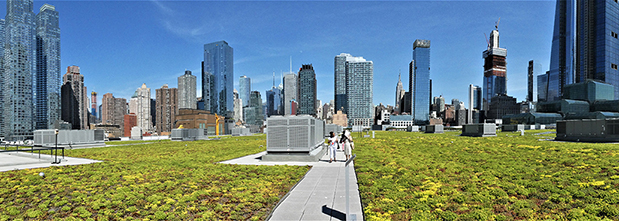
(Photo from the Javits Center’s green roof, home to 26 bird species, thousands of honeybees, and a sanctuary for wildlife. The project is helping to reduce the energy consumption of the convention center by 26 percent.)
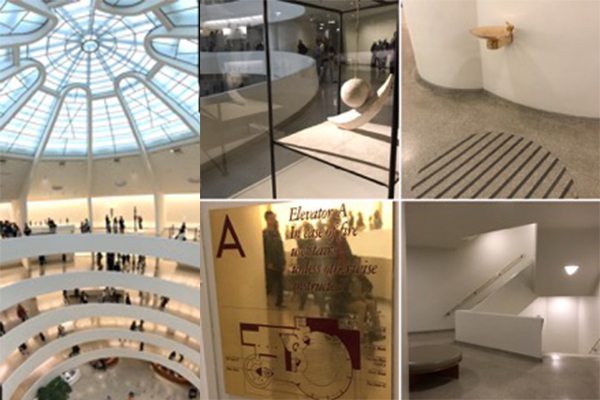
(Photos from Solomon R. Guggenheim Museum by Architect Frank Lloyd Wright. He has been one of my favorite architects because of his neat and meticulous design that takes extra care for beautiful details like drinking fountains, signs, handrails, artificial and natural light.)


